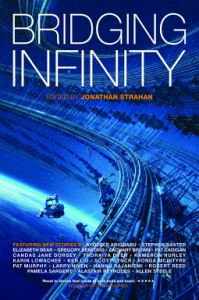Since we recently published part of Alistair Rennie’s BleakWarrior plus an essay by and an interview with him, he asked us to tell some artsy half lies about our endeavour to his blog’s audience. Humbly we accepted, hence the following words:
There is an infinite rail,
spanning all of the universe.
The Train is on the track
and the track is made of tale.
– so says Dylan’s Song of the Manifold
WhiteTrain is a small press endeavour, born out of a loose writer’s and illustrator’s collective in 2010. At home in all fields of fantastic literature and recurrently grazing philosophy, WT organizes public readings with a slope to scenic enactment and publishes the fiction magazine “IF”, alongside novels and story collections.
Why we do what we do
What do we do?
1. WT celebrates radical fictionalism. That is because there is nothing but fiction. We love the word. We love tales. We are fictionauts.
2. We reject rule of ideology over art. That is because we are literal anarchists.
3. We do publish our own works of fiction and illustration among that of others. That is because we work the fringe and in our prime language, which is German, there are few publishers on the fringe.
4. Even though our work as publishers concentrates on works in German language, we also publish articles, interviews and more in English. That is because we pierced this barrier long ago.
5. We advertise, mostly for free. Yes, we advertise books and publishers, art and artists and projects that we think are worthy to advertise – independents and such enterprises who publish from the backlist, books long out of print and so on. That is, because there are others quite like us, who we like to support and because we know that many of the best books have already been written and should not be forgotten.
6. We publish “IF – Magazin für angewandte Fantastik” (which translates best into “… for the applied fantastic”). IF is a strange pulp thing, thrusting its quill, which is also a javelin, into every matter of fantastic genres, subverting clichés, aiming for the big scope of relevance, not triviality.
Applied is the fantastic mainly in stories and illustrations, but also in every form of imagination, that gives form to the unformed imagination, that is a true virtue of the pure mind. Therefore IF is open for near to every form of text or graphic content, that deals with the previously unformulated, be it social Utopias, architecture, music, metaphysics or civil disobedience.
7. We took the White Train for a sigil. That is because … well there is no short answer to this question.
It is true that there once was a White Train, which also has been called the Armageddon Train, for it did transport nuclear weapons throughout the United States of A. It is also true that Lucius Shepard once wrote a poem called White Trains, which foreshadowed our coming into existence without us even knowing about.
It is true, there have been Black Trains mentioned in works by Grant Morrison, Neal Gaiman and others. All of these carried their passengers to detention camps and were run by evil government officials. This may seem as a derivation of the Black Helicopter myth held alive for a long period of time now by the overseas militia movement, until at last and most oddly it became true. It is all the more true that Woody Guthrie once wrote a song, titled Little Black Train, and that black trains often have been used as a symbol for death. Hence we chose our White Train as a symbol for life and for freedom of art.
WT is an underground train slipping through the holes within its own rail network of flaring synapses, thus piercing the unknown in unforeseen ways. WT carries its passengers to Utopia, but notice: It does so whether their topia it is a good topia or not. That is because after all, truth is a manifold thing.
8. We wrote a manifesto in the form of a tale. That is because story mode is the only mode that can make White Train real. This manifesto even has been translated into English, but said translation still awaits its exact location in spacetime for publication to be revealed.
9. We shape ourselves as seemingly mythic figures. That is because myth is all this is about and we like to live in a dream.
10. We believe WT to be open for everyone decent to come aboard. That is because as yet many decent people have already done so and all have called WT a most gentle being. So, if you like – or need – to step off the station platform, you can do so at any time. Either your work shall be published by us, or you will like to delve into our fiction. Just use one of the portholes we installed in the spiders web: www.whitetrain.de / WhiteTrain on Facebook / furthermore all our books and the magazine, available most easily on amazon.de)
For Alistair Rennie’s contibutions to IF Magazin, check out issue #4, which is all about Sword & Sorcery and has been illustrated magnificently. Rennie’s essay and interview are presented in the original English versions.
After all is said, goodbye.
Author: Tobias Reckermann, WhiteTrain operator, 2016.
originally posted on fellow writer Alistair Rennie’s blog: http://alistairrennie.com







